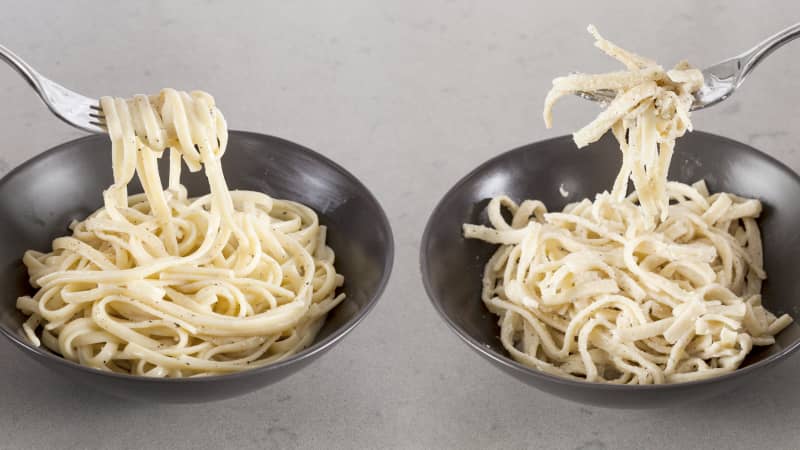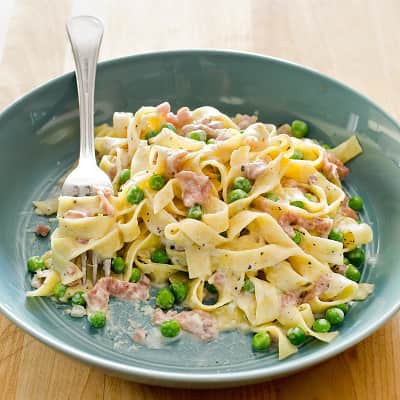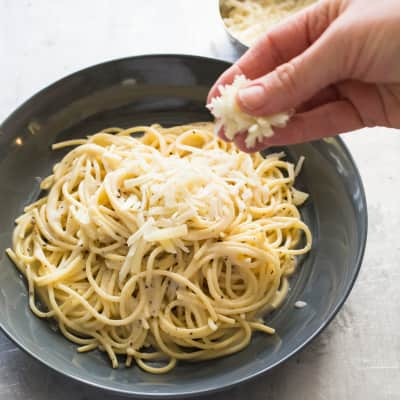Because fresh pasta is made from eggs and white wheat flour, it has a tender, delicate texture, which makes it less versatile than dried pasta. The latter is made from water and semolina flour, which gives it a stronger gluten structure and a sturdier texture. Always use fresh pasta in recipes that call for it, as the success of the dish likely depends on it.
When to Substitute Fresh Pasta for Dried Pasta
Published Dec. 5, 2018.

Use these guidelines when deciding whether to substitute fresh pasta for dried.
| DO | DON'T |
|---|---|
Do feel free to substitute fresh pasta for dried when serving it with sauces that have a fine, uniform texture, such as pesto or ground meat ragus. Because cooked fresh pasta doesn’t absorb water like dried does, be conservative when adding pasta cooking water to the accompanying pasta sauce, or the sauce might end up being too loose. | Don’t substitute fresh pasta for dried in recipes that require vigorous stirring of pasta with sauce to release starch and create a creamy consistency (such as cacio e pepe); such stirring can break fresh strands. |
Do use 24 ounces of fresh pasta for every 16 ounces of dried. | Don’t substitute fresh pasta in dishes with large components such as broccoli or sausage. Because of its softer texture, fresh pasta tends to clump, so the components won’t combine evenly. |






